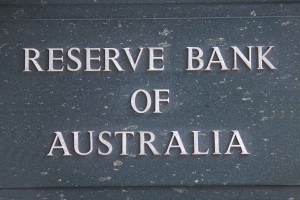What's ahead for Australia's economy on 2018?
If your'e intersted to know what's ahead for Australia and the other major world economies you'll enjoy reading the ANZ Research Quarterly which looks ahead to 2018 with the expectation that the recent global lift in growth will be tested.
Key Points:
- The growth outlook remains positive, supported by a substantial investment pipeline.
- Consumption, however, remains a key risk.
- Q3 wage growth disappointed: will we see some catchup in Q4?
- ANZ still expect the RBA to lift the cash rate next year, but unemployment, underemployment and wage growth are the key indicators to watch.
More details:
In a reflection of the current experience of many economies, Australia continues to enjoy solid growth and an improving labour market, but wage and price inflation remain weak.
On the one hand, firms are reporting some of the strongest business conditions on record, as well as increasing difficulty in finding labour, while at the same time wage growth is languishing at record lows, and ongoing strong retail competition is holding inflation down.
Elevated business conditions are being supported by solid profit growth.
Company profits are 20% higher than a year ago, and this is supporting a promising recovery in non-mining business investment.
A solid improvement in CAPEX expectations as well as ongoing strength in non-residential building approvals suggest that there is a substantial pipeline of private investment ahead.
Moreover, the expansion of public infrastructure is spilling over into private sector activity, across both non-residential construction and machinery & equipment investment.
Along with a very much reduced drag from falling mining investment, this suggests that business investment will be an important driver of growth over the next couple of years.
Public sector investment is also providing a solid lift to demand, as is public consumption (Figure 1).
The record pipeline of infrastructure spending, largely driven by the states, particularly NSW, will support public investment spending over the next few years.
Government consumption has also been growing strongly, alongside robust growth in public sector employment.
The expansion of the National Disability Insurance Scheme has also been supporting public spending and should continue to do so as the roll-out extends through to 2020.
Housing
Housing construction has been a key driver of the recovery over the past few years, but will contribute little to GDP growth in 2018.
We expect residential investment to remain relatively elevated in the near term.
There remains a considerable amount of work for high rise units in the pipeline, while approvals have recovered much of the decline seen late last year.
Moreover, housing finance commitments for construction are still rising strongly.
Together this suggests that activity should slow only gradually through 2018, with higher interest rates likely to see the rate of decline steepen in 2019.
House price growth is also likely to continue to slow.
National house prices are now growing at an annual rate of 7%, down from the recent peak of 11.4%, and we expect a further gradual slowdown.
This is largely being driven by the macro-prudential measures implemented by APRA earlier this year intended to slow interest-only lending (Figure 2).
The substantial supply of units coming on-stream, particularly in Brisbane, is also likely to contribute to the slowdown in price growth.
More broadly, the increase in supply is being digested reasonably well, helped by strong population growth.
The slowdown in housing, both in terms of construction and prices, will remove one of the supports to consumer spending.
Consumption has benefitted over recent years from the sharp rise in house prices, with the saving rate falling from a peak of nearly 11% to 4.6% in Q2 2017.
Moreover, the strength in residential construction has supported strong spending in household goods.
Wages:
Soft income growth has also been weighing on consumption, although we expect some relief on that front.
Income growth is likely to pick up over the coming year helped by strong employment gains as well as a gradual improvement in wage growth.
The compositional drag from mining is fading, while the strength in full time jobs growth is a positive for household incomes.
A gradual strengthening in household incomes will be a welcome development, although we expect it will only be enough to support consumption growth at current levels rather than drive a pick-up, with households unlikely to further reduce their saving rate given worries about high household debt.
The outlook for the labour market remains quite positive, with leading indicators suggesting that employment should continue to grow at a rate fast enough to see the unemployment rate continue to fall.
Unemployment is at a four year low, while the underemployment rate is now heading lower after peaking in February.
Elevated business conditions and ongoing strength in job vacancies suggest that further inroads into the unemployment rate are likely (Figure 3).
Alongside our solid profile for growth, we expect to see a further reduction in labour market spare capacity in 2018.
Falling unemployment should eventually put upward pressure on wages growth.
Recent wage outcomes, however, have been disappointing, with the larger than usual minimum wage rise in Q3 failing to give the wage price index (WPI) a boost.
Whether this implies that underlying wage growth has slowed is difficult to be confident about, with the delay in a number of enterprise bargaining agreements possibly weighing on the outcome.
This raises the possibility of a bounce in the Q4 WPI: something we will be watching for closely.
In our view, the risks to the growth outlook are relatively balanced, although the risks to the wage and price inflation outlook appear to be on the downside.
This is a challenge for our expectation that the RBA will tighten in 2018.
We still expect the RBA to hike in 2018, although the trajectory of unemployment and wages will be critical.
While we don’t think that the Bank requires materially higher inflation before it lifts the cash rate off the low of 1.5%, we do think the Bank will need to be quite confident that inflation is set to move back into the 2-3% target band.
Hence the trajectory of the unemployment rate and wage inflation will remain critical for the Bank’s deliberations.
ANZ’s RBA Bias Index continues to point to higher rates next year.
The index assesses the content of the RBA’s post meeting statements, and shows a good relationship with moves in the cash rate (Figure 4). It is currently pointing to 50bp of hikes in the cash rate next year.
While this makes us feel more comfortable with our call for higher rates this year, the weakness in wage growth and inflation suggests that the risks are tilted towards a later start to the RBA tightening cycle than we currently expect.























